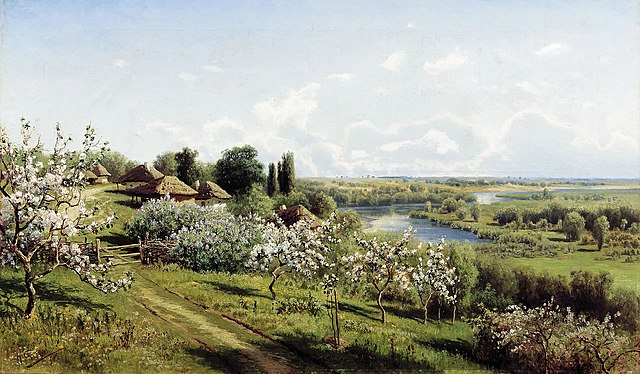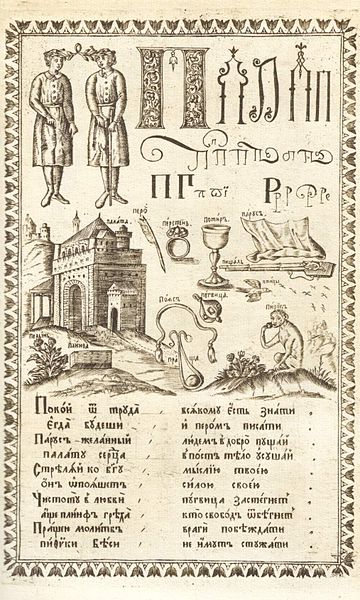Little Russia, also known in English as Malorussia, Little Rus', Rus' Minor, and the French equivalent Petite Russie, is a geographical and historical term used to describe Ukraine. Since 1334, Yuri II Boleslav, the ruler of the Ruthenian Kingdom of Galicia–Volhynia, signed his decrees Natus dux totius Russiæ minoris, but the expression μικρὰ Ρωσσία is found as early as 1292, in the Byzantine writer Codinus. The distinction between "Great" and "Little" Rus' probably originated among Byzantine, Greek-speaking clerics who wanted to separate the two Ruthenian ecclesiastical metropolises of Halych and Moscow.
Nikolay Sergeyev. "Apple blossom. In Little Russia." 1895. Oil on canvas.
"In Little Russia". Photo by Sergey Prokudin-Gorsky, between 1905 and 1915.
Russian is an East Slavic language, spoken primarily in Russia. It is the native language of the Russians and belongs to the Indo-European language family. It is one of four living East Slavic languages, and is also a part of the larger Balto-Slavic languages. It was the de facto and de jure official language of the former Soviet Union. Russian has remained an official language in independent Russia, Belarus, Kazakhstan, Kyrgyzstan, and Tajikistan, and is still commonly used as a lingua franca in Ukraine, Moldova, the Caucasus, Central Asia, and to a lesser extent in the Baltic states and Israel.
This page from an "ABC" book printed in Moscow in 1694 shows the letter П.
The Ostromir Gospels of 1056 is the second oldest East Slavic book known, one of many medieval illuminated manuscripts preserved in the Russian National Library.




